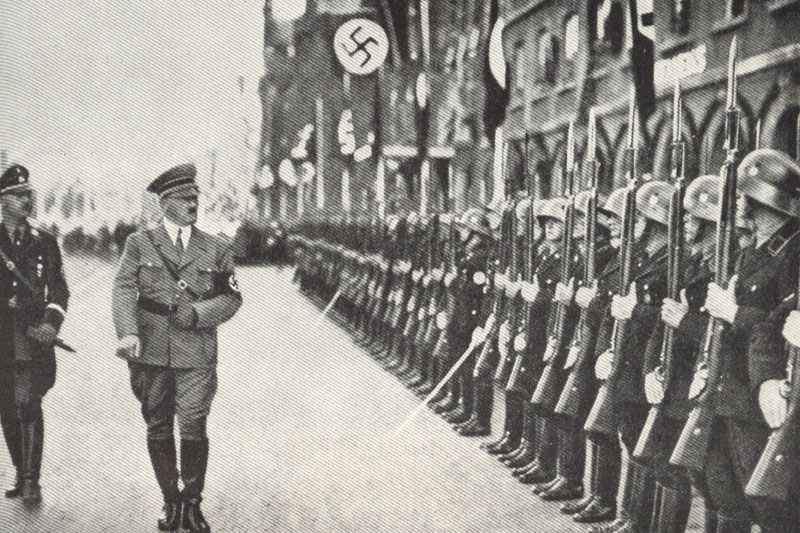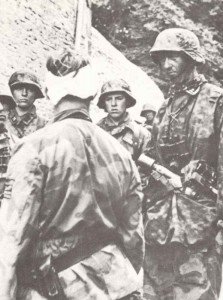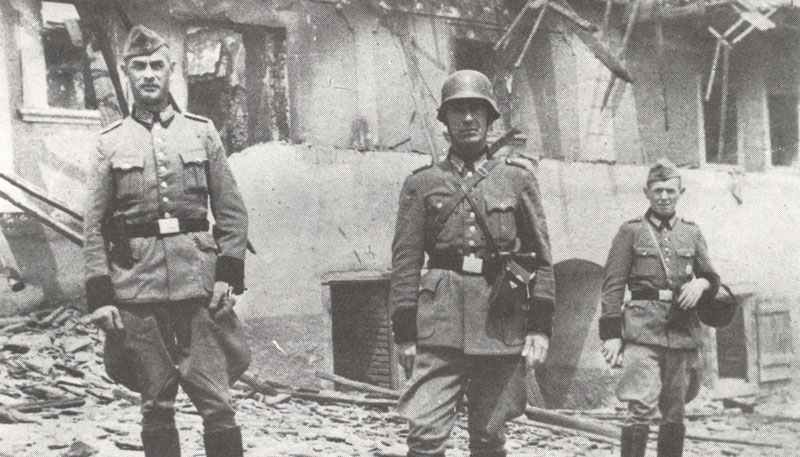The Waffen-SS – origin, formation, war crimes, combat performance and strength of Hitler’s elite fighters of the Third Reich 1933 to 1945.

History of the Waffen-SS
Table of Contents
Creation of the Waffen-SS
Before Germany went to war the term Waffen-SS had not been coined. The small units which at the beginning of WW2 had a strength of 18,000 men were to grow into a formidable army of nearly one million which had earned a reputation for ruthlessness and the grudging respect of not only the German Army, to which it was subordinated, but also the armies against which it fought.
As soon as Hitler came to power he entrusted the Reichsfuehrer (Reichs Leader) of the SS, Heinrich Himmler, with the task of forming an armed SS guard unit for his personal protection, and as an instrument for special tasks. The original unit was the SS-Stabswache (Staff Guard) which in September 1933 became the Bodyguard Regiment Adolf Hitler (Leibstandarte SS Adolf Hitler = LAH). Under its energetic commander Sepp Dietrich and with the help of Army and Police instructors, the LAH grew rapidly. Then a further two regiments – Deutschland in Munich and Germania in Hamburg – were formed.
When conscription was re-introduced in Germany on 16 March 1935 the combined strength of the three regiments was 8,459 men. While the men were hand-picked, equipment was often obsolete and motor transport virtually non-existent, but already there were plans to expand these scattered units into a division, which could be used by Himmler in case of internal unrest or subordinated to the Army High Command in time of war.
The theoretical strength and organization of the SS-Verfuegungstruppe on the eve of war was a divisional staff, the Leibstandarte and three infantry regiments – all of which were motorized – a regimental staff controlling two motorcycle battalions, a motorized engineer and signals battalion and a medical unit.
Although small and inexperienced, the SS units were a welcome addition to the Army’s fighting strength because they were all fully motorized at a time when the bulk of the Army still traveled on foot or was horse-drawn.
Atrocities and combat reputation of the Waffen-SS

Waffen-SS membership totaled several hundreds of thousands of men, and any generalization is fatuous. The Waffen-SS committed atrocities both on and off the battlefield. So occasionally did the Allied armies of World War II; and so, for that matter, have Western armies since 1945.
The record of the Waffen-SS in some ways resembles certain of those post-war colonial atrocities in that they too were the result of combat stress allied with a total contempt for the human qualities of the enemy and his civilian population.
But in the Waffen-SS this contempt was deliberately fostered as a matter of ideology. While some atrocities were the work of individuals or small groups acting in the heat of the moment, as will happen in any army, in any war, there are plentiful instances of major atrocities carried out by large units, on superior orders, as a matter of policy. We know that Allied units sometimes shot prisoners as well.

The Eastern Legion SS formations, recruited among semi-barbarous Peoples for anti-partisan warfare, had a horrible record, but the whole guilt cannot be passed on to them; low-numbered ‘Reichsdeutsche’ (ethnic Germans) formations were guilty of equally disgusting excesses. It is therefore permissible to say that in scope, in nature, in degree of official sanction, and in the attitude fostered specifically within the organization, the Waffen-SS record of atrocity is worse than that of any known Allied or other German military force.
But on the other hand, it remains equally true that many officers, men, and units of the Waffen-SS displayed again and again standards of courage, discipline and self-sacrifice which must command the respect of any soldier or historian. These units fought their way to a combat reputation and fighting power second to none.
Their iron reliability led to their employment as a military fire brigade, rushed from sector to sector to shore up collapsing fronts, or to sacrifice themselves in desperate counter-attacks, heedless of appalling casualties.









The “three destroyers of Lidice” shown in the picture are actually wearing Heer (army) and not SS uniforms.